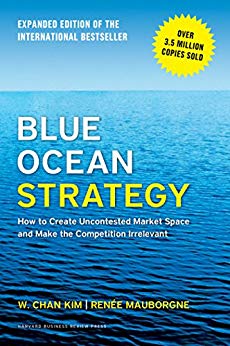

This article is an excerpt from the Shortform summary of "Blue Ocean Strategy" by W. Chan Kim and Renee Mauborgne. Shortform has the world's best summaries of books you should be reading.
Like this article? Sign up for a free trial here .
Much of business strategy in the past few decades has focused on competition, including Michael Porter’s five forces and SWOT analysis. In these red oceans, market structures are known, and companies try to outperform rivals to grab share of existing demand.
Over time, markets become crowded, products become commodities competing on price, and profits dissipate. This trend is aggravated by technological improvements that allow incredible creation of supply that can outstrip demand, causing further price competition.
In contrast, blue ocean strategy creates new market spaces, creates new demand, and leads to profitable growth. Here, the market structure is yet to be decided, so the price competition is far less intense. In other words, a blue ocean is a new, uncontested market space where the existing competition is irrelevant.
Red Ocean vs Blue Ocean
Here’s a simple summary of how a traditional red ocean strategy matches up to a blue ocean strategy:
| Red ocean strategy | Blue ocean strategy |
| Compete in existing industry. | Create a new uncontested industry. |
| Beat the competition. | Avoid competition and make competitors irrelevant. |
| Fight for existing demand. | Create new demand. |
| Trade off value for cost. | Simultaneously increase value and decrease cost. |
| Winning is zero-sum against competitors. | Winning is non-zero-sum. |
| Market structure is fixed, and you play within the structure. | The market can be restructured. |
| Follow best practices and improve on them. | Break the best practice rules. |
Clearly, a red ocean strategy tends to invite strong competition, which often becomes a race to the bottom in terms of pricing.
If you want to avoid a red ocean, you should create a blue ocean strategy for yourself. Learn more about what a blue ocean strategy is here.
———End of Preview———

Like what you just read? Read the rest of the world's best summary of "Blue Ocean Strategy" at Shortform . Learn the book's critical concepts in 20 minutes or less .
Here's what you'll find in our full Blue Ocean Strategy summary :
- What blue oceans are, and how you create one for your business
- Why some businesses succeed in creating blue oceans, and why others fail
- The red ocean traps you have to avoid if you want business growth






